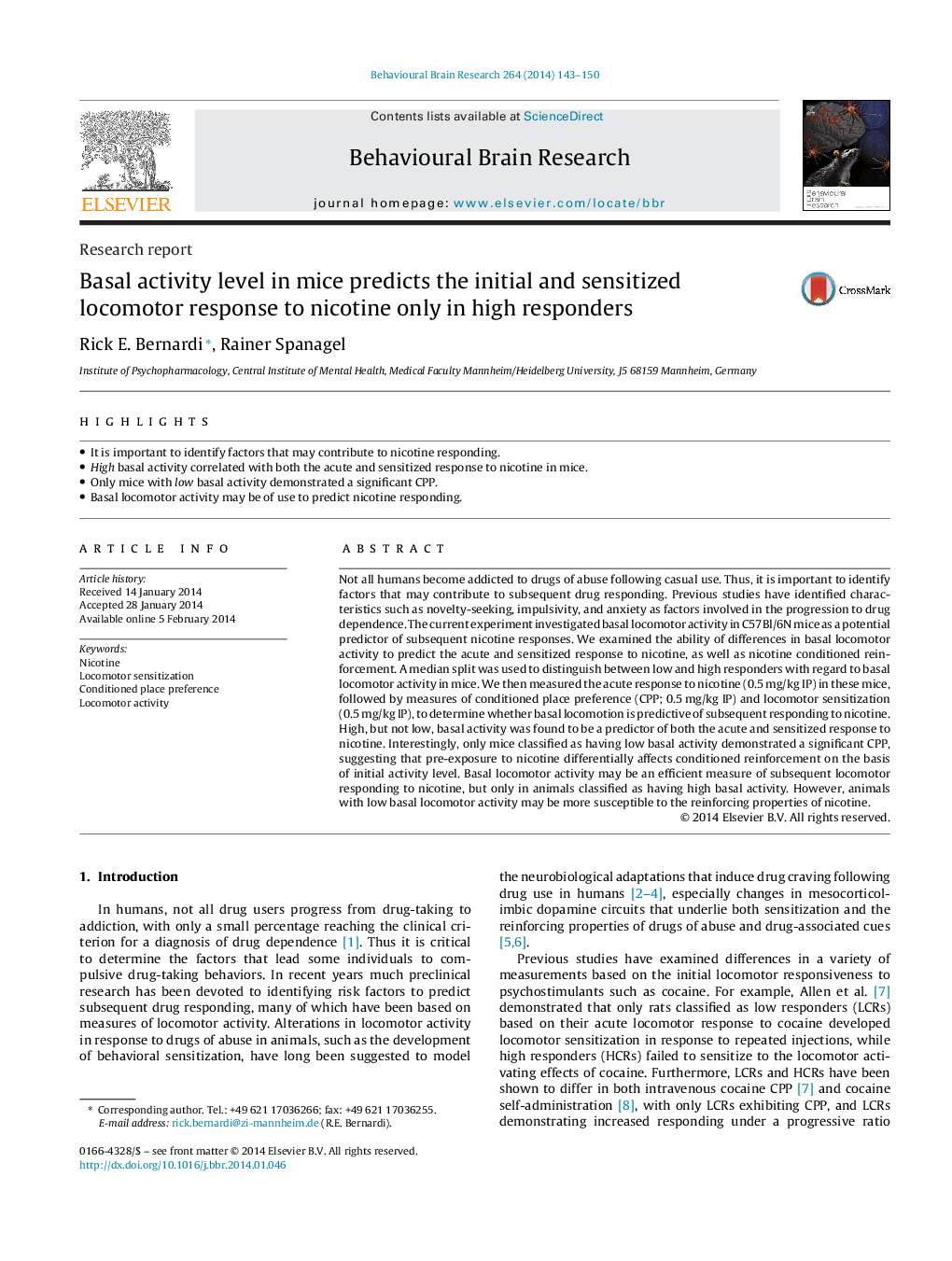| کد مقاله | کد نشریه | سال انتشار | مقاله انگلیسی | نسخه تمام متن |
|---|---|---|---|---|
| 6258261 | 1612968 | 2014 | 8 صفحه PDF | دانلود رایگان |
- It is important to identify factors that may contribute to nicotine responding.
- High basal activity correlated with both the acute and sensitized response to nicotine in mice.
- Only mice with low basal activity demonstrated a significant CPP.
- Basal locomotor activity may be of use to predict nicotine responding.
Not all humans become addicted to drugs of abuse following casual use. Thus, it is important to identify factors that may contribute to subsequent drug responding. Previous studies have identified characteristics such as novelty-seeking, impulsivity, and anxiety as factors involved in the progression to drug dependence. The current experiment investigated basal locomotor activity in C57Bl/6N mice as a potential predictor of subsequent nicotine responses. We examined the ability of differences in basal locomotor activity to predict the acute and sensitized response to nicotine, as well as nicotine conditioned reinforcement. A median split was used to distinguish between low and high responders with regard to basal locomotor activity in mice. We then measured the acute response to nicotine (0.5Â mg/kg IP) in these mice, followed by measures of conditioned place preference (CPP; 0.5Â mg/kg IP) and locomotor sensitization (0.5Â mg/kg IP), to determine whether basal locomotion is predictive of subsequent responding to nicotine. High, but not low, basal activity was found to be a predictor of both the acute and sensitized response to nicotine. Interestingly, only mice classified as having low basal activity demonstrated a significant CPP, suggesting that pre-exposure to nicotine differentially affects conditioned reinforcement on the basis of initial activity level. Basal locomotor activity may be an efficient measure of subsequent locomotor responding to nicotine, but only in animals classified as having high basal activity. However, animals with low basal locomotor activity may be more susceptible to the reinforcing properties of nicotine.
Journal: Behavioural Brain Research - Volume 264, 1 May 2014, Pages 143-150
